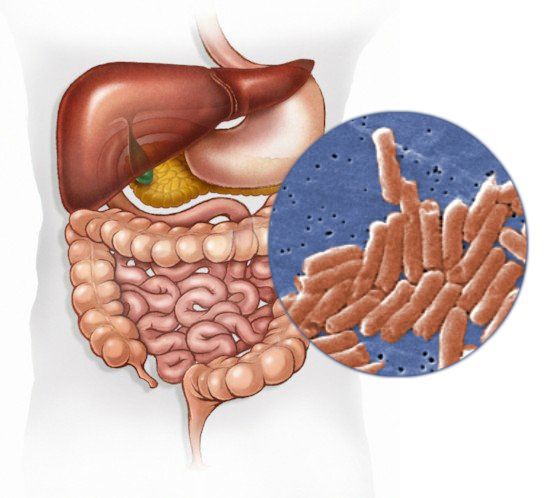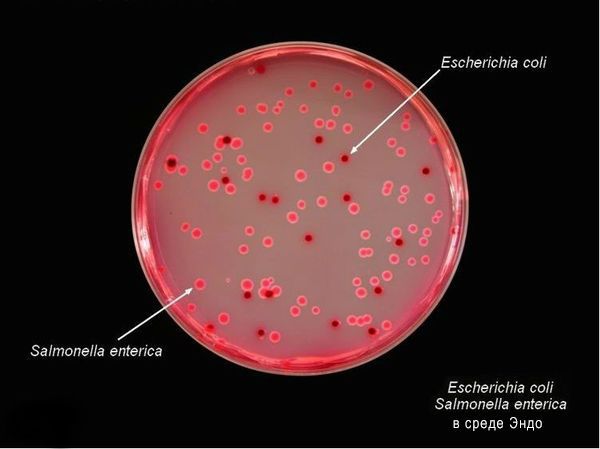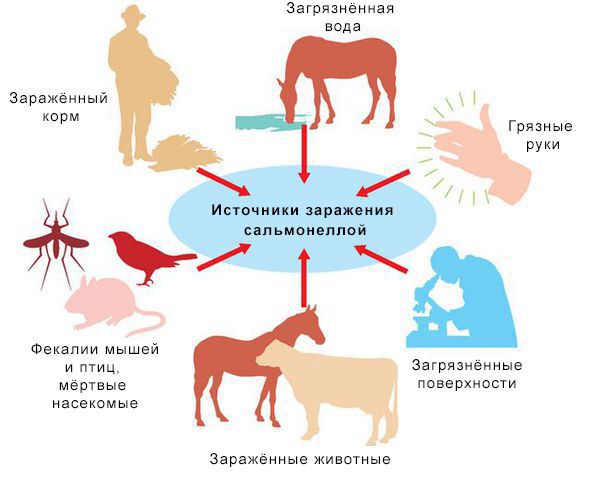How long can you have salmonella
Обновлено: 24.04.2024
Salmonella infections may require prompt treatment with supportive care and fluids. Treatment of Salmonella infections with antibiotics may be necessary for severe cases and hospitalization in a veterinary clinic may be required. Your pet’s veterinarian is the best source of advice on your pet’s health.
How do you get rid of salmonella in dogs?
Provide a steady supply of clean, fresh water, and make sure that your dog is staying hydrated to compensate for the fluid lost through vomiting and diarrhea. Depending on the extent of the infection, the veterinarian may prescribe antibiotics to help fight the salmonella bacteria or prevent shock.
How long does it take for a dog to get over salmonella?
The most common symptom of salmonella in dogs is diarrhea. This should resolve in 24- 48 hours in most cases.
What antibiotic is used to treat salmonella in dogs?
The antibiotic most frequently used in the Salmonella-positive dogs was metronidazole.
Can salmonella kill a dog?
Left untreated salmonellosis can kill a dog with a compromised immune system, extremely poor gut health or a senior dog. While your dog is sick, it’s important to monitor them, ensure they stay hydrated and also speak to your vet.
What is the best way to treat salmonella?
Because salmonella infection can be dehydrating, treatment focuses on replacing fluids and electrolytes. Severe cases may require hospitalization and fluids delivered directly into a vein (intravenous). In addition, your doctor may recommend: Anti-diarrheals.
What happens if salmonella is not treated?
Typically, people with salmonella infection have no symptoms. Others develop diarrhea, fever and abdominal cramps within eight to 72 hours. Most healthy people recover within a few days without specific treatment.
How common is salmonella in dogs?
Somewhat surprisingly, Salmonellosis is seen infrequently in dogs and cats and is generally limited to signs of acute diarrhea. How common is Salmonella in dogs? While some early surveys disclosed that over 20% of the dogs in a population may have been infected.
What antibiotics treat salmonella?
Common first-line oral antibiotics for susceptible Salmonella infections are fluoroquinolones (for adults) and azithromycin (for children). Ceftriaxone is an alternative first-line treatment agent.
How long can salmonella last?
Salmonella illness can be serious and is more dangerous for certain people. Symptoms of infection usually appear 6 hours to 6 days after eating a contaminated food. These symptoms include diarrhea, fever, and stomach cramps. In most cases, illness lasts 4–7 days and people recover without antibiotic treatment.
How do I know if my dog has salmonella?
How do I know if my dog or cat has Salmonella infection? Dogs and cats that become ill from Salmonella infection generally will have diarrhea that may contain blood or mucus. Affected animals may seem more tired than usual, and may have a fever or vomit.
Is Salmonella contagious in dogs?
Salmonellosis is uncommon in dogs and cats, but they can be carriers of the bacteria. This means that even if the pets don’t show symptoms of salmonellosis, they can still shed Salmonella in their stool and saliva and then spread the bacteria to the home environment and to people and other pets in the household.
Are raw eggs good for dogs?
Eggs are perfectly safe for dogs, Eggs are a great source of nutrition for your canine companion. They are high in protein, fatty acids, vitamins, and fatty acids that help support your dog inside and out.
Can dogs get salmonella from chicken?
YES! Dogs can get Salmonella infection from chickens and other animals carrying the bacteria, by exposure to contaminated excretions (mostly poop!) or by eating contaminated meat.
What does Salmonella need to survive?
Salmonella bacteria love wet environments shielded from the sun. They have the remarkable ability to survive under adverse conditions. They survive between the pH’s of 4 to 8+, and can grow between 8 and 45 C.
What is the incubation period for Salmonella?
The incubation period for salmonellosis is approximately 12–72 hours, but it can be longer. Salmonella gastroenteritis is characterized by the sudden onset of • diarrhea (sometime blood-tinged), • abdominal cramps • fever, and • occasionally nausea and vomiting.
Что такое сальмонеллез? Причины возникновения, диагностику и методы лечения разберем в статье доктора Александрова Павла Андреевича, инфекциониста со стажем в 14 лет.
Над статьей доктора Александрова Павла Андреевича работали литературный редактор Маргарита Тихонова , научный редактор Сергей Федосов и шеф-редактор Лада Родчанина

Определение болезни. Причины заболевания
Сальмонеллёз — это острое инфекционное заболевание желудочно-кишечного тракта с возможностью дальнейшей генерализации процесса (распространением заболевания по всему организму). Причина развития сальмонеллёза — различные серотипы бактерий рода Salmonella. К клиническим характеристикам сальмонеллёза относят синдром общей инфекционной интоксикации, синдром поражения желудочно-кишечного тракта (гастрит, энтерит), синдром обезвоживания, гепатолиенальный синдром (увелечение печени и/или селезёнки) и иногда синдром экзантемы (высыпания).

Возбудитель
семейство — кишечные бактерии (Enterobacteriaceae)
род — Сальмонелла (Salmonella)
Существует 7 подвидов (более 2500 сероваров). Наиболее актуальные серовары: typhimurium, enteritidis, panama, london.
Представлены следующей антигенной структурой:
- О-антиген (соматический, термостабильный);
- H-антиген (жгутиковый, термолабильный);
- К-антиген (поверхностный, капсульный);
- Vi-антиген (антиген вирулентности — степень способности штамма вызвать заболевание; является компонентом О антигена);
- М-антиген (слизистый).
К факторам патогенности (механизмам приспособления бактерий) относятся:
- холероподобный энтротоксин — интенсивная секреция жидкости в просвет кишки;
- эндотоксин (липополисахарид) — общее проявление интоксикации;
- инвазия — заражение.
Тинкториальные свойства: разлагают глюкозу и маннит, образовывая кислоту и газ, продуцируют сероводород. Грамм-отрицательные палочки подвижны, спор и капсул не образуют. Растут на обычных питательных средах, образуя прозрачные колонии, на мясо-пептонном агаре с образованием колоний голубоватого цвета, на среде Эндо образуют прозрачные розовые колонии, на среде Плоскирева — бесцветные мутные, на висмут-сульфитном агаре — чёрные с металлическим блеском.

Высокоустойчивы во внешней среде (без агрессивных воздействий), активно размножаются в мясе и молоке (до 20 суток), в воде сохраняют жизнесособность до 5 мес., в почве — до 9 мес., в комнатной пыли — до 6 мес., в колбасе — до 1 мес., в яйцах — до 3 мес., в фекалиях сохраняются до 4 лет. При 56 °C погибают через 3 минуты, при кипячении мгновенно. Сальмонеллы, которые находятся в куске мяса массой 400 гр и толщиной до 9 см, погибают при его варке за 3,5 часа. Соление и копчение оставляет сальмонелл в живых. Воздействие кислот и хлорсодержащих дезинфицирующих средств вызывает их гибель. В последнее десятилетие появились штаммы сальмонелл, устойчивые ко многим антимикробным препаратам. [2] [5]
Эпидемиология
Зооантропоноз, распространённый повсеместно.
Источники инфекции: домашние животные (сами не болеют), птицы, человек (больной и носитель).
Резервуары инфекции и причина эпидемических вспышек сальмонеллеза: грызуны, дикие птицы, тараканы, улитки, лягушки, змеи.

Механизм передачи: фекально-оральный (пути — алиментарный, т. е. через органы ЖКТ, водный, контактно-бытовой). В основном источниками заражения являются птицы, яйца и молочные продукты. Инфицирующая доза 10*5-10*8 микробных тел.
Факторы риска
- детский возраст до 5 лет;
- возраст до 12 месяцев, особенно высока вероятность заболеть без грудного вскармливания;
- иммунодефицит (в основном у младенцев и лиц старше 65 лет, а так же у пациентов с ВИЧ в стадии СПИДа, принимающих иммунодепрессивные препараты);
- регулярный приём препаратов, снижающих кислотность желудка;
- употребление сырого и недостаточно термически обработанного мяса, молочных продуктов и яиц;
- частый контакт с животными с несоблюдением правил гигиены;
- посещение стран с низким уровнем жизни.
В России в 2016 г. заболеваемость была – 26 на 100 тыс. населения, у детей в до 14 лет – 71 на 100 тыс. Для сравнения в США среднегодовая заболеваемость — 15 на 100 тыс. (1,35 миллиона заболеваний, 26 500 госпитализаций и 420 смертей ежегодно). Иммунитет строго типоспецифичен (возможно многократное инфицирование различными штаммами) и непродолжителен [2] [6] [9] [10] .
При обнаружении схожих симптомов проконсультируйтесь у врача. Не занимайтесь самолечением - это опасно для вашего здоровья!
Симптомы сальмонеллеза
Инкубационный период — от 6 часов (при алиментарном заражении) до 3 суток. При внутрибрюшном заражении (искусственно) — до 8 дней.
Начало заболевания острое (т. е. развитие основных синдромов происходит в первые сутки заболевания).

Symptoms of Salmonella usually appear within six hours to six days after eating food (or touching an animal) contaminated with the bacteria and include. Nausea, vomiting, fever and diarrhea are all hallmark symptoms.
Salmonella is a bacterial infection that frequently causes food poisoning because it affects the digestive tract and can cause nausea, vomiting, and diarrhea. Salmonella infection is called salmonellosis.
What Are Symptoms of Salmonella?
Symptoms of Salmonella usually appear within six hours to six days after eating food (or touching an animal) contaminated with the bacteria and include:
- Nausea
- Vomiting that typically lasts 2 or 3 days.
- May be watery or bloody
- Usually lasts 4 to 10 days or cramping
Salmonella infection is usually not serious, and most people recover within a week.
People at high risk of severe illness from Salmonella include:
- People with a weak immune system under one year old
- Adults older than 50 years
See a doctor if you have:
- Severe abdominal pain
- Inability to eat or drink
- Vomit blood
- Bloody stools
- Fever higher than 100.4° F (38° C) for more than 2 or 3 days
- Diarrhea and a fever higher than 102° F
- Diarrhea for more than 3 days does not improve
- Signs of dehydration, such as:
- Very little urine output and throat on standing
What Causes Salmonella?
Salmonellosis is caused by infection with Salmonella bacteria. People usually get infected after eating food (or touching an animal) contaminated with the Salmonella bacteria.
Foods that commonly have Salmonella bacteria include:
- Chicken
- Eggs
- Dairy products
- Raw and undercooked meat
- Raw fruits or vegetables
People can also get salmonellosis from touching certain animals, such as chickens, ducks, and turtles.
How Is Salmonella Diagnosed?
Salmonella infection is often diagnosed with a history of symptoms. Tests may not be needed if symptoms are not severe.
For patients at higher risk of getting severe symptoms of Salmonella infection, a doctor may order a stool test to check for Salmonella bacteria, however, results can take 2 to 3 days and a doctor may decide to start treatment before results are returned.
What Is the Treatment for Salmonella?
Salmonella infection usually goes away on its own, and treatment is often not needed.
For patients at higher risk of serious illness, antibiotics may be prescribed.
![]()
A farm out of southeastern Indiana is recalling more than 200 million eggs that have been distributed to consumers in nine states because of possible salmonella contamination.
Corrections & Clarifications: An earlier version of this article misstated the plant number and Julian date range of the eggs possibly contaminated with salmonella. It has since been corrected.
More than 200 million eggs from Rose Acre Farms of Seymour, Ind., are being recalled due to possible contamination with salmonella. According to the Food and Drug Administration, 22 illnesses have been reported so far.
Learn more about the infection and what you can do to stay safe:
What is salmonella?
Salmonella is a bacterial infection that generally affects the intestinal tract and occasionally the bloodstream.
How long does it take to become ill?
Symptoms develop six to 72 hours after eating food containing the bacteria, and the illness can last between four and seven days.
Most people recover without treatment. However, in some people the diarrhea may be so severe that the patient needs to be hospitalized. Older adults, infants and those who have impaired immune systems are at highest risk.
What are the symptoms?
Symptoms of salmonella poisoning include diarrhea, abdominal pain and fever.
Can salmonella be deadly?
Salmonella can be deadly. Every year, salmonella is estimated to cause 1 million food-borne illnesses in the United States with 19,000 hospitalizations and 380 deaths.
What brands of eggs are being recalled?
The eggs have reached consumers in Colorado, Florida, New Jersey, New York, North Carolina, Pennsylvania, South Carolina, Virginia and West Virginia through retail stores and restaurants.
The eggs were sold under the brand names Country Daybreak; Crystal Farms; Coburn Farms; Sunshine Farms; Glenview; Great Value; as well as at Walmart and Food Lion stores.
The recall involves eggs with the plant number P-1065, with the Julian date range of 011 through 102 printed on either side of the carton or package.
What should I do if I have eggs that are being recalled?
Consumers who have purchased the eggs are urged to immediately discontinue use of the recalled eggs and to return them to the place of purchase for a full refund.
How do you get salmonella?
Salmonella is spread by eating or drinking contaminated food or water or by contact with infected animals or people. The most frequent sources are poultry, eggs, meat and dairy products. Up to 90% of salmonella infections in the U.S. are food-borne, according to the Louisiana Department of Health.
If you live with someone who is sick, do you need to take additional precautions?
Salmonella is rarely spread from person to person. It is a good reminder to practice proper hand-washing hygiene. If you are concerned, consult with your physician.
When should I contact my doctor?
The CDC suggests contacting your doctor or health care provider if you have:
- Diarrhea and a fever over 101.5 degrees Fahrenheit.
- Diarrhea for more than three days that is not improving.
- Bloody stools.
- Prolonged vomiting that prevents you from keeping liquids down.
- Signs of dehydration, such as: making very little urine, dry mouth and throat, dizziness when standing up.
Do infected people need to be isolated?
Per a Louisiana Department of Health Publication, only people with active diarrhea should be excluded from school or day care. Most infected people can return to work or school after the diarrhea phase provided they carefully wash their hands after toilet visits. LDH advises special consideration must be given to food handlers, health care workers and children in daycare.
What is the treatment?
Most people with salmonella recover on their own or require fluids to prevent dehydration.
Что такое сальмонеллез? Причины возникновения, диагностику и методы лечения разберем в статье доктора Александрова Павла Андреевича, инфекциониста со стажем в 14 лет.
Над статьей доктора Александрова Павла Андреевича работали литературный редактор Маргарита Тихонова , научный редактор Сергей Федосов и шеф-редактор Лада Родчанина
![Александров Павел Андреевич, инфекционист, гепатолог, паразитолог, детский инфекционист - Санкт-Петербург]()
Определение болезни. Причины заболевания
Сальмонеллёз — это острое инфекционное заболевание желудочно-кишечного тракта с возможностью дальнейшей генерализации процесса (распространением заболевания по всему организму). Причина развития сальмонеллёза — различные серотипы бактерий рода Salmonella. К клиническим характеристикам сальмонеллёза относят синдром общей инфекционной интоксикации, синдром поражения желудочно-кишечного тракта (гастрит, энтерит), синдром обезвоживания, гепатолиенальный синдром (увелечение печени и/или селезёнки) и иногда синдром экзантемы (высыпания).
![Заболевание, вызываемое различными серотипами бактерий рода Salmonella]()
Возбудитель
семейство — кишечные бактерии (Enterobacteriaceae)
род — Сальмонелла (Salmonella)
Существует 7 подвидов (более 2500 сероваров). Наиболее актуальные серовары: typhimurium, enteritidis, panama, london.
Представлены следующей антигенной структурой:
- О-антиген (соматический, термостабильный);
- H-антиген (жгутиковый, термолабильный);
- К-антиген (поверхностный, капсульный);
- Vi-антиген (антиген вирулентности — степень способности штамма вызвать заболевание; является компонентом О антигена);
- М-антиген (слизистый).
К факторам патогенности (механизмам приспособления бактерий) относятся:
- холероподобный энтротоксин — интенсивная секреция жидкости в просвет кишки;
- эндотоксин (липополисахарид) — общее проявление интоксикации;
- инвазия — заражение.
Тинкториальные свойства: разлагают глюкозу и маннит, образовывая кислоту и газ, продуцируют сероводород. Грамм-отрицательные палочки подвижны, спор и капсул не образуют. Растут на обычных питательных средах, образуя прозрачные колонии, на мясо-пептонном агаре с образованием колоний голубоватого цвета, на среде Эндо образуют прозрачные розовые колонии, на среде Плоскирева — бесцветные мутные, на висмут-сульфитном агаре — чёрные с металлическим блеском.
![Бактерии в агаре Эндо]()
Высокоустойчивы во внешней среде (без агрессивных воздействий), активно размножаются в мясе и молоке (до 20 суток), в воде сохраняют жизнесособность до 5 мес., в почве — до 9 мес., в комнатной пыли — до 6 мес., в колбасе — до 1 мес., в яйцах — до 3 мес., в фекалиях сохраняются до 4 лет. При 56 °C погибают через 3 минуты, при кипячении мгновенно. Сальмонеллы, которые находятся в куске мяса массой 400 гр и толщиной до 9 см, погибают при его варке за 3,5 часа. Соление и копчение оставляет сальмонелл в живых. Воздействие кислот и хлорсодержащих дезинфицирующих средств вызывает их гибель. В последнее десятилетие появились штаммы сальмонелл, устойчивые ко многим антимикробным препаратам. [2] [5]
Эпидемиология
Зооантропоноз, распространённый повсеместно.
Источники инфекции: домашние животные (сами не болеют), птицы, человек (больной и носитель).
Резервуары инфекции и причина эпидемических вспышек сальмонеллеза: грызуны, дикие птицы, тараканы, улитки, лягушки, змеи.
![Источники заражения сальмонеллой]()
Механизм передачи: фекально-оральный (пути — алиментарный, т. е. через органы ЖКТ, водный, контактно-бытовой). В основном источниками заражения являются птицы, яйца и молочные продукты. Инфицирующая доза 10*5-10*8 микробных тел.
Факторы риска
- детский возраст до 5 лет;
- возраст до 12 месяцев, особенно высока вероятность заболеть без грудного вскармливания;
- иммунодефицит (в основном у младенцев и лиц старше 65 лет, а так же у пациентов с ВИЧ в стадии СПИДа, принимающих иммунодепрессивные препараты);
- регулярный приём препаратов, снижающих кислотность желудка;
- употребление сырого и недостаточно термически обработанного мяса, молочных продуктов и яиц;
- частый контакт с животными с несоблюдением правил гигиены;
- посещение стран с низким уровнем жизни.
В России в 2016 г. заболеваемость была – 26 на 100 тыс. населения, у детей в до 14 лет – 71 на 100 тыс. Для сравнения в США среднегодовая заболеваемость — 15 на 100 тыс. (1,35 миллиона заболеваний, 26 500 госпитализаций и 420 смертей ежегодно). Иммунитет строго типоспецифичен (возможно многократное инфицирование различными штаммами) и непродолжителен [2] [6] [9] [10] .
При обнаружении схожих симптомов проконсультируйтесь у врача. Не занимайтесь самолечением - это опасно для вашего здоровья!
Симптомы сальмонеллеза
Инкубационный период — от 6 часов (при алиментарном заражении) до 3 суток. При внутрибрюшном заражении (искусственно) — до 8 дней.
Начало заболевания острое (т. е. развитие основных синдромов происходит в первые сутки заболевания).
Читайте также:


